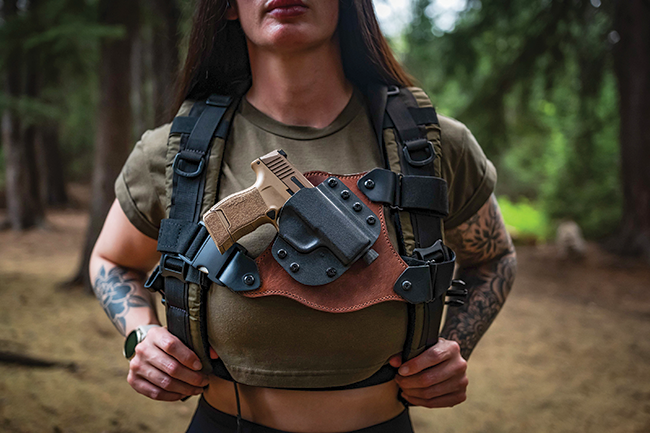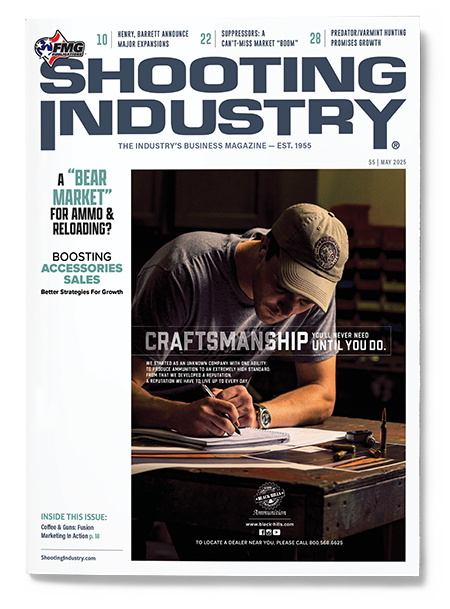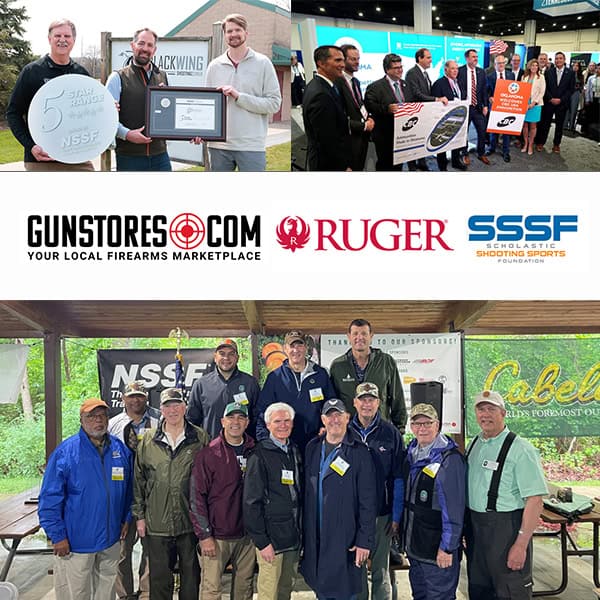Accessory Advantage
Strategies To Boost Accessory Sales In Firearms Retail
In the competitive world of firearms retail, selling guns alone isn’t always enough to cover expenses. Accessories such as magazines, sights, holsters, red dots, belts, cleaning kits and cases present significant opportunities for retailers to boost revenue, build customer loyalty and enhance the shopping experience.
I wanted to see what retailers, instructors, and customers had to say. So, I tossed up a social media post on LinkedIn and reached thousands of people.1 One standout trend is people are willing to pay a little extra if the customer service is excellent and a knowledgeable salesperson assists them.
From what I’m hearing, retail stores are not leveraging one of their most significant advantages: building rapport with the customers who walk in.
Stores are missing out because these add-on items often carry higher profit margins than firearms and can turn a one-time gun buyer into a repeat customer.
The firearms industry has its unique challenges, particularly because it can be confusing for customers. Sometimes, those of us in the industry talk over people’s heads or assume the person we are having a conversation with knows what specific terms mean.
A brick-and-mortar store can win out over online stores by being the go-to source for knowledge. Tom Adamski, from Texas, is a precision shooting enthusiast. He shared what he’s looking for when interacting with an associate at the sales counter.
“As an experienced shooter and customer, I am sometimes befuddled by the lack of knowledge and willingness to educate/share on the part of some retailers,” he said. “Speaking with others who actually use the products/accessories is important, too.”
Educate Customers On Accessory Benefits
Educating customers on the value of accessories is the first step. Many customers, especially new firearms owners, may not fully understand what accessories are available beyond the gun itself. Have discussions with them about how these products make shooting safer and can improve performance.
When the staff is well-informed, they can confidently recommend accessories tailored to a customer’s needs, but it starts with the basics — including safety.
Joel Gossett told me, “As an NRA Instructor and Training Counselor, I often take students to the store to assist in purchasing firearms and gear. Most of the staff don’t understand firearms safety and the needs of new shooters. Often, they’ll pull a firearm out of the cabinet with their finger on the trigger and hand it to the customer, muzzle pointing at the customer. It’s not a good look, considering I just taught them about firearm safety. Many don’t even know what holsters will fit firearms they sell.”
Side-By-Side Comparisons: Belts & Holsters
A store that customers can walk into has several advantages with products like belts and holsters. Most people, especially first-time gun owners, know nothing about gun belts and don’t realize they are stiffer than the ones they already own.
A quality gun belt keeps the holster secure and in place while also adding comfort. Most individuals have never tried a gun belt, and I often say, “You can’t miss what you’ve never had.”
Holsters are a big seller, and we all have more of them sitting in a box than we know what to do with. We buy one, but for various reasons it feels uncomfortable, doesn’t ride right or doesn’t fit the gun well.
You can show the difference between a poorly made holster and a quality one by taking out a holster and explaining how, on some, you can adjust the cant, the belt clip and retention. “Bargain” holsters don’t always cover the trigger or fit the gun well, while others lack good retention.
Many holsters are designed to be worn in specific positions, and a traditional IWB holster does not always work well for appendix carry. The right holster for the right position is safer, and it will improve draw time.
Sights
Older shooters can significantly benefit from upgraded sights. Red dots or high-contrast sights make a major difference for someone with poor vision. My eyesight isn’t as good as it used to be, and I didn’t realize what I was missing until I tried different options. I show a variety of sights to students, and many end up wanting an upgrade because they see the improvement in the sight picture when comparing different designs.
There is a wide range of sights, from night sights to fiber optics to ones that will work with red dots. There’s no need to stock a wide selection because the customer is looking to you for guidance, so you only need to pick a couple of styles in different categories.
Again, staff training plays a crucial role in this situation, as employees must be able to explain the benefits in a clear and relatable way. This approach makes it sound less like a sales pitch and more like you’re teaching them something.
Bundling
Another effective tactic is bundling accessories with firearm purchases. When a customer buys a gun, retailers can suggest a pre-packaged “starter kit” that includes essentials like a holster, extra magazine and cleaning kit at a discount compared to buying each item separately. This approach simplifies decision-making for the buyer, increases the perceived value of the purchase and encourages them to buy while they are there.
A “Concealed Carry Package” with a pistol, IWB holster and belt can be a complete package for someone who just got their concealed carry license.
Product Placement
Product placement has a big impact on sales. To attract attention to a bundled deal, consider using a central shelf space dedicated to showcasing an example of all the items together.
You can also implement cross-merchandising strategies, such as positioning holsters next to handguns. Displaying red dots and sights near guns can also spark interest.
There’s no need to group identical products together. Mixing different products increases the chances of customers asking questions about items right in front of them.
Ask Questions
Speaking of questions, train your staff to ask questions like “How do you plan to carry?” and then they can recommend a holster that meets their needs.
This extra step stands out to prospective customers like John McDonald, director at Threat Ready Inc.
“As I age, customer service becomes critical. It’s not always price point; it has to be reasonable, but excellent service goes a very long way!” he exclaimed.
Build Relationships For Repeat Business
Surviving in today’s market and making a profit is about turning a gun buyer into a repeat customer. Show genuine interest in understanding what the customer needs, and oftentimes, you’ll discover they may not even know themselves. This is your opportunity to guide them toward their next purchase.
J.R. Shooting Sports is a family-owned retailer in Aurora, Ill. Associate McKenzie [last name withheld by request] explained, “We like to talk to the customer and hear what they want and what they do, so we find what you need and do not try to make a quick dollar. Our customers never leave feeling strong-armed into buying something they don’t really want just because it was up on the rack.”
Offering complimentary services, such as sight installation or bore sighting with a purchase, transforms a basic red dot sale into a positive interaction. This strategy gives physical stores a competitive advantage online retailers cannot match.
Additionally, hosting workshops on topics like holster selection or firearm maintenance highlights related products and engages customers. Teaming with instructors can be similar to having additional employees without payroll costs. You can even get them to run the workshop.
Brian Kapnick has been an NRA Training Counselor and instructor for 30 years. He highlighted a missed opportunity for stores that don’t focus on sales past the gun.
“In my experience, most who work in showrooms at the gun counter are only interested in selling firearms,” he observed. “They’re not looking at the whole package. How about holsters, practice ammunition, carry ammunition, and extra magazines? Yes, the employee will show the customer the very basics of how this gun works — if asked — but does not have time to go in-depth. Working with instructors can help fill the gap.”
Increasing accessory sales in a firearms retail store requires a combination of planning, creativity and a strong focus on customer needs. To turn accessories into a bigger source of profit, you have to educate customers and get creative. Although these items may be smaller purchases compared to firearms, they can have a considerable impact on your bottom line. Implementing some of these strategies can position your store as a destination for all of a shooter’s needs.
Footnote:
https://tinyurl.com/4wyvsyxv






